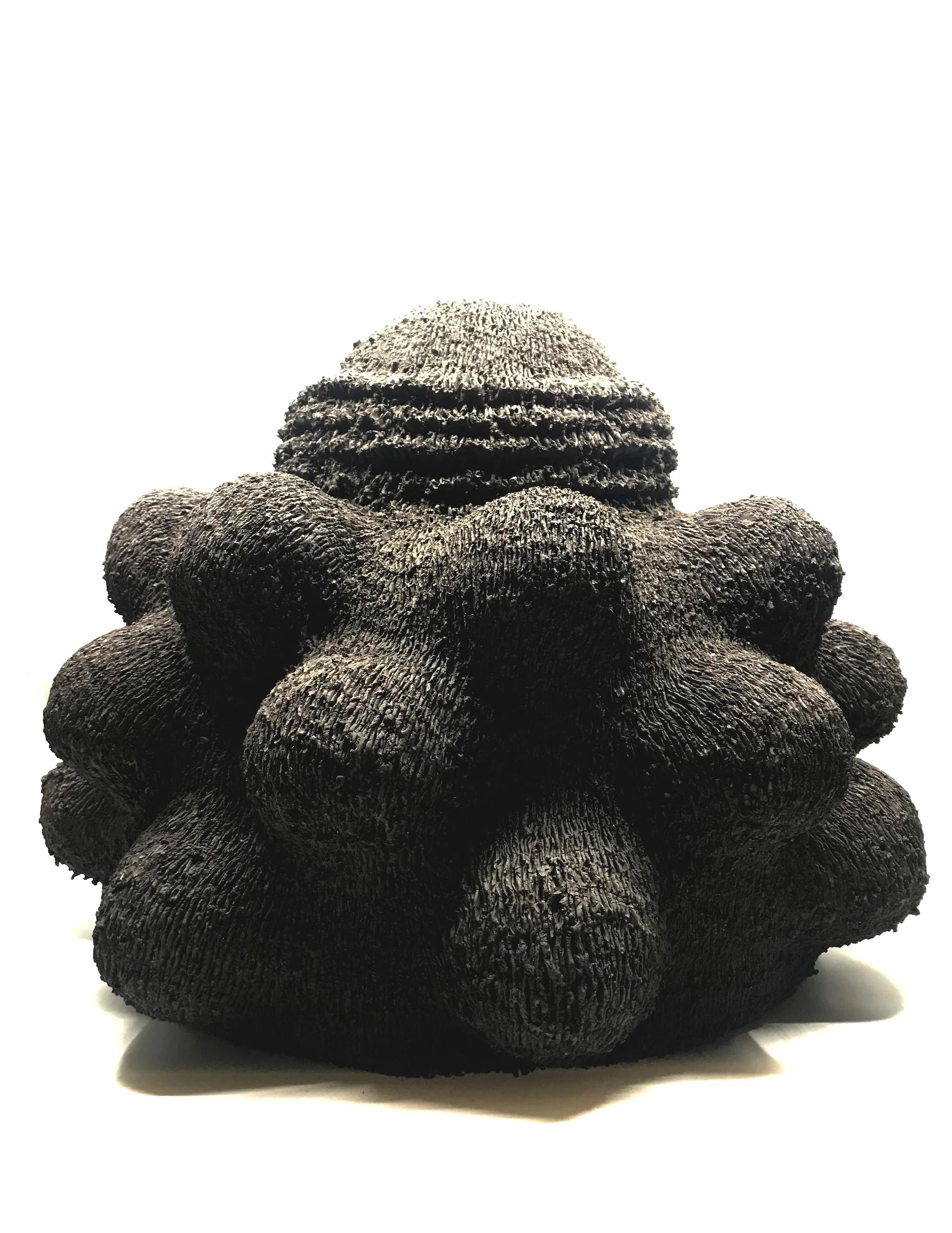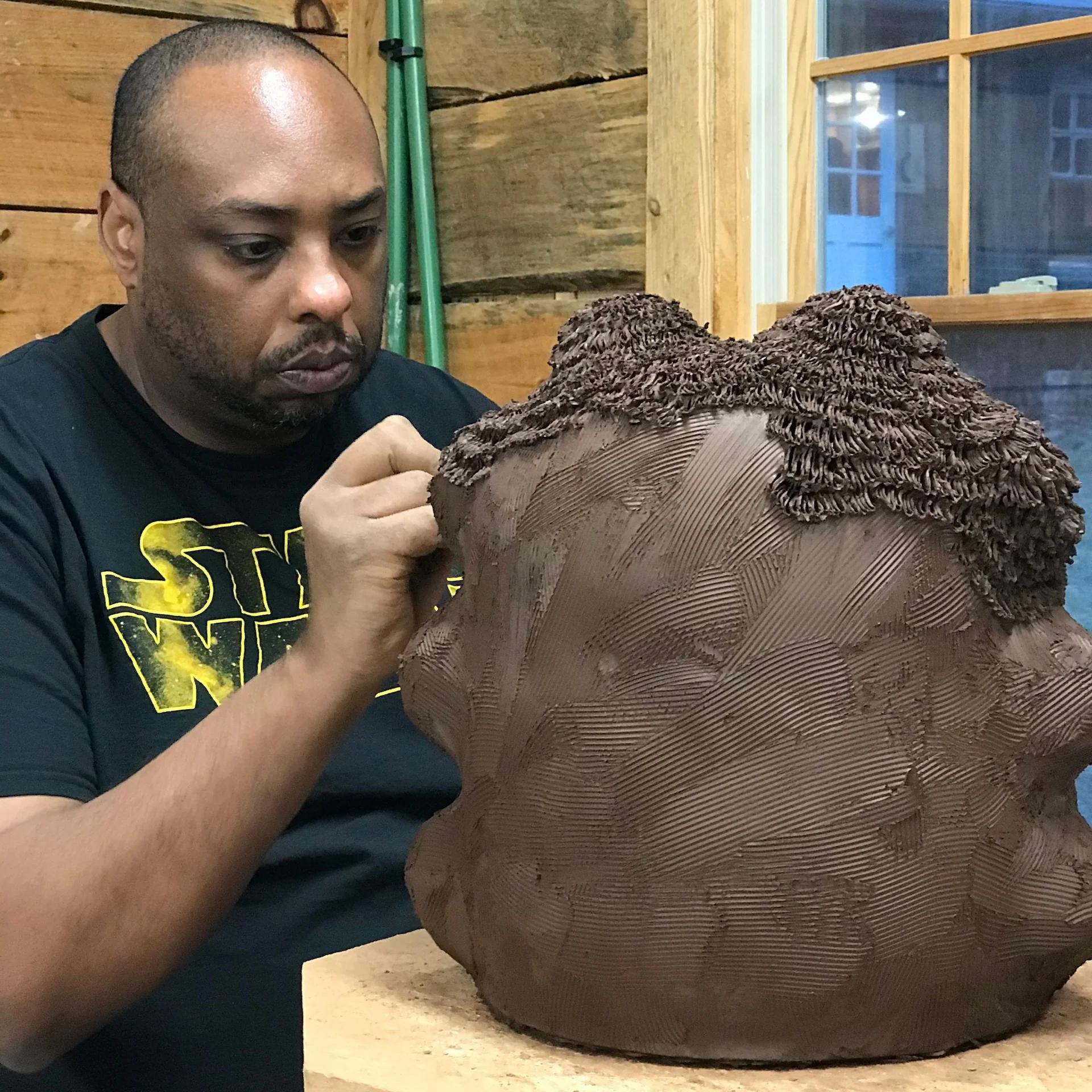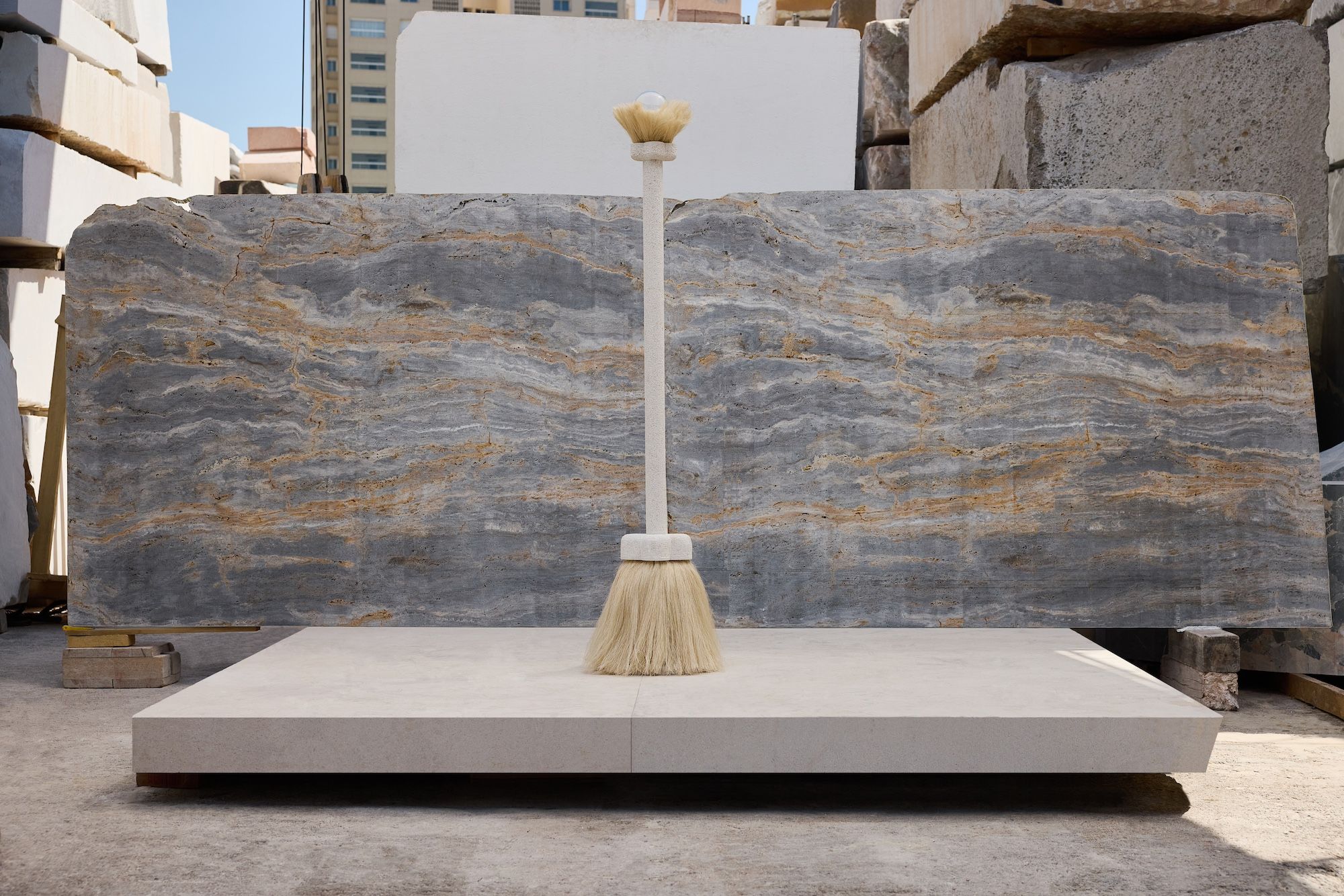HOW TO MAKE IT SEPTEMBER 1 2021
by Anna Carnick
Rising star Donté Hayes on inspiration, isolation, and objects as contemporary talisman

DONTÉ HAYES/ PREPARE, 2020
Photo courtesy of the artist
“I want you to want to touch my work,” ceramic artist Donté Hayes tells me, smiling. “We’re always told not to touch art, but I want my work to be so welcoming and the textures to be so inviting that people feel they have to touch it—even if they’re looking at it through a screen.”
The rising star, Atlanta native is certainly succeeding on that front. Since 2018, Hayes has been creating a series of evocative, got-to-be-touched black stoneware vessels that feel at once of this earth and beyond it—thanks to dramatic, organic forms and intricate, textile-like surfaces that call to mind raffia, grass, or human hair.
Hayes describes his process as both highly personal and research driven, pointing to inspirational sources as rich and varied as science fiction, hip hop, his African heritage, colonial era symbolism, socio-political systems, pop culture, his immediate family, his own personal history, and beyond. “I take all these things in, and they become a part of me,” he says. These layered references, alongside the striking, curious forms and incredible textures, are perhaps what make the work so accessible and evocative. “I see my work as an initiation,” Hayes says. “It takes you from wherever you are to another place, a place you need to be in that moment.”

DONTÉ HAYES/ WOMB, 2020
Photo courtesy of the artist
Hayes’ pieces are the result of an intensely meticulous, even ritualistic crafting process. After instinctually hand-shaping his forms, he works directly on the form with a potter’s needle tool, etching his patterns by pulling the clay away from the form itself. Hayes, who has a background in printmaking and art history, says, “I see these pieces as three-dimensional prints in a lot of ways.”
“I can usually do the forms themselves pretty quickly, perhaps over three or four hours. But it may take me 18 hours just to do the texture alone,” Hayes notes, “and I usually do that without stopping. I don’t take a break, I don’t eat, I don’t sleep. I just get into a trance; I go to other places while I work.”

HAYES CREATES TEXTURE ON A FORM DURING A RESIDENCY AT TOWNSHIP10 IN MARSHALL, NC
Photo © Kyle Lawson; courtesy of Donté Hayes
Where do you go? I ask. “The process is so repetitious, it gets to the point where I feel part of a larger rhythm. Often when I speak about my work, I speak of it as connected to aboriginal dream paintings. That’s because when I’m making, I’m thinking about things that have happened to me, I’m listening to hip hop music, I’m thinking of the past, the present, our futures; thinking of things I’ve read or written; thinking of my mother. And just as hair has waves, there are waves in the ocean, and the beats in the music are wavelike, and it all just becomes one. I get into this repetition, and that is an initiation to a ritual where the mark becomes more than just a mark; it speaks to a story.”

DONTÉ HAYES/ SHOULDER | WEIGHT, BOTH 2021
Photos courtesy of the artist
The unnamed series began during Hayes' time as a graduate student at the University of Iowa between 2017 and 2020, sparked by the feelings of isolation that he experienced as a Black man in that space. “When I moved to Iowa City from metro Atlanta, it was very disheartening. I was going from a place that was full of all kinds of people, to a place that was not at all diverse. I was pretty much the only Black person. And I felt like an astronaut coming into a new environment. It made me think a lot about how other people perceive me. I know how I perceive myself, but suddenly I'm being perceived through mostly white eyes.”
He goes on: “I started to think a lot about what is welcoming to me. I always want my work to speak just how I speak—in a welcoming, gracious, thankful manner. I wasn’t getting that when I was at Iowa generally. And so that personal experience launched a period of research. I started thinking about various forms of welcoming. And being from the south, my mind went to the pineapple, which has long been identified as a symbol of hospitality.”

ARTIST DONTÉ HAYES
Photo courtesy of Donté Hayes
Shortly into his research, Hayes learned that “the idea of the pineapple as a symbol of hospitality comes from colonialism. In the 17th and 18th centuries, only the rich were able to afford pineapples at their tables,” he explains. “So the pineapple symbolized power too, because only the wealthy had the means to be hospitable. In decorative arts, when you see a pineapple motif on an object, that was created for the bourgeoisie. The middle class wanted to show they were powerful, so you found pineapples all over teapots and the like, for those who couldn’t quite afford the real thing. Then in the early 1900s, along came the Dole pineapple company, connecting it to images of Hawaii, which romanticized the idea of the pineapple—a fruit that, if you’ve ever seen a pineapple in an agricultural setting, looks alien. And that’s how I felt at the time—like an alien. So I took that as my form.”

DONTÉ HAYES/ REMIX, 2021 | SPEAK, 2019
Photos courtesy of Donté Hayes
“Now, I knew pineapples did not originate in Hawaii; they come from South America, where indigenous people used that crop to create beer, as a tool for rituals, for bartering, and so on. And that was deep for me,” Hayes says, “because I’m both African American and Chickasaw Nation, and so many Caribbean people, so many Afro Cubans, and others are all connected to all this. Colonists brought enslaved Africans to South America, the Caribbean, to South Carolina and Georgia, so I was thinking a lot about how intertwined this all is—commerce and humans and heritage.”
He goes on, “I’ve never been to Africa, yet I am part of the African diaspora. It is in my DNA; it is in my hair. I think of my mother’s hair… a symbol of comfort, of welcoming to me. The textures come from her. And hair looks like the texture in raffia—the same material used in masked initiation rights, in traditional African domiciles. And all those things are representations of the fabric of migration and people coming to a new world and being seen and reinventing themselves in that place.”
“And I feel like people of color are always reinventing themselves.”

HAYES CREATES A FORM, AND CLAY SCULPTURES ARE LOADED IN THE KILN, READY TO BE FIRED. BOTH PHOTOS TAKEN DURING HAYES' TOWNSHIP10 RESIDENCY IN THE BLUE RIDGE MOUNTAINS
Left: Photos © Kyle Lawson | Right: Donté Hayes; courtesy of Donté Hayes
Asked if he sees his work as a tool to create community; he is quick to say, “My goal is not to be an activist; I’m an artist. My work speaks to what it feels like to be a human being. I never think of my work as didactic. I want to make art that is welcoming so all humanity can see it. When a Black artist makes art about themselves, it’s often only seen in the context of Blackness. But if a white artist makes art about being authentic to who they are, no one says they are being white—when people describe that work, they speak about humanity. I’m talking about humanity too. And that’s true Afro-futurism.
“I’m speaking about the texture of what it feels like to be a human being. I’m creating textures so inviting you have to reach out and touch it.” ◆
Donté Hayes’ work is represented by Mindy Solomon Gallery in Miami.


